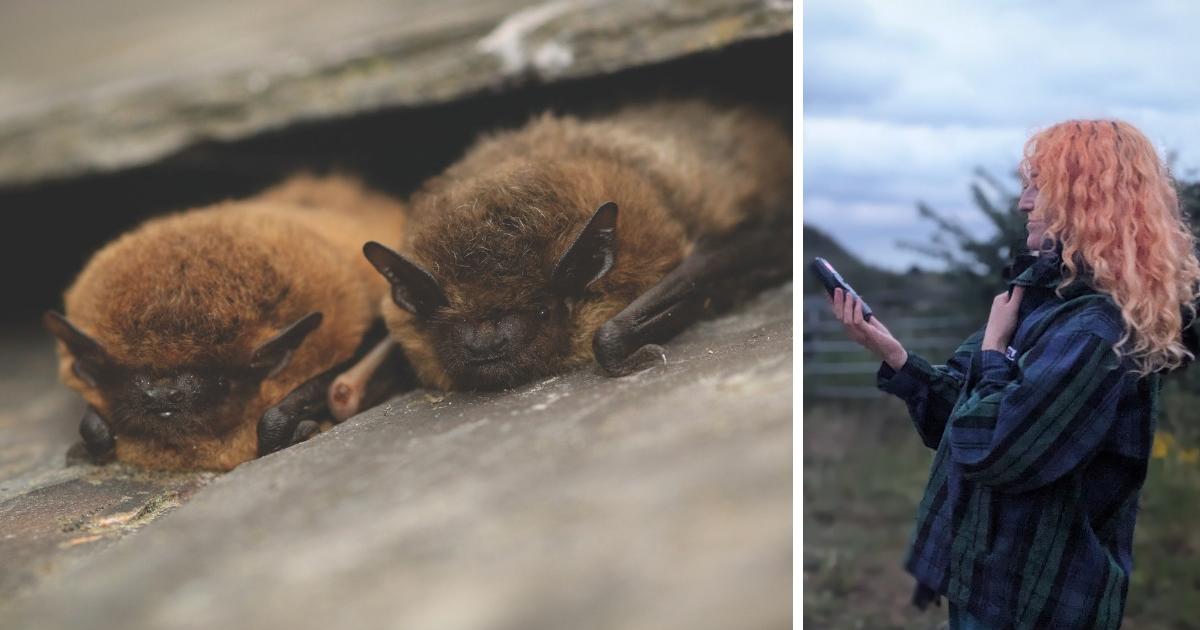I’ve never gone on a bat walk before – my closest encounter with a bat before this was hearing a scrabbling noise in the roof of a cottage we stayed in on holiday – but our Yorkshire Wildlife Trust guide is so confident in bat-spotting that she’s able to differentiate what species of bat we’ve overheard simply by the rhythm of the similar-sounding pips on our bat-detectors.
Bats are social animals, roosting primarily in trees and buildings in colonies ranging in size from a few to over a thousand individuals. You’ll find most species feeding where insects are abundant. They are important indicators of local biodiversity; bat numbers might suffer when there are declines in insect populations or when habitats are destroyed or poorly managed.
RECOMMENDED READS:
Bats are most active in the summer months when they come out of hibernation, hunt insects, give birth and raise young, and the best time to see them is around sunset or sunrise when it is warm and dry. The Trust has a number of nature reserves where you can head out on a bat walk; tonight I’m at North Cave Wetlands near Hessle, but there are also bat walks at Moorlands Nature Reserve near York, Spurn Point nature reserve, and Stirley nature reserve near Huddersfield.
We don’t see much on our walk out – it’s still too light, and the goal is to reach the best bat place at peak bat hour. It gives our guide time to tell us all about bats and for the rest of us to study our Ghostbuster-esque detectors; bat detectors work by picking up the frequency bats use to ecolocate, which is at a pitch indistinguishable by humans – between 45 and 65khz, in comparison to the human auditory range of 20 Hz to 20 kHz. Humans can sometimes hear the social noises bats make, particularly young children – which sound like squealing or clicking.
Bat detectors pick up the frequency bats use (Image: Submitted) You can distinguish different bats by the rhythm their ecolocation calls make on the bat detector.
We didn’t have to wait long to hear bats whizzing overhead – the particularly eagle-eyed amongst the group managed to spot some dark shapes in the night, but the rest of us were content with the odd popping noise coming from our detectors, which got louder and faded away whenever a bat neared and was easy to drown out with excited chatter.
Our two species of the night were common pipistrelle and soprano pipistrelle, some of the smallest of our native bats – but there are sixteen others to enjoy in quietly special spots.
Saturday 30 August marks International Bat Night, an opportunity to celebrate Britain’s 18 species of bat.
British bat populations suffered huge declines last century, but recent survey results released by the National Bat Monitoring Programme show that at least three of the UK’s bat species are showing significant signs of population increase, and another six species or species groups appear stable. This is due to efforts by nature and bat conservation groups to protect bats by law and better-manage and improve their local habitats.
Despite some recovery, bat population numbers are not back to pre-crash levels. One third of Britain’s most highly-threatened mammal species are bats, so there is definitely more we can do to help them thrive!
Whether it’s planting more insect-friendly flowers in your garden to offer your local bats a nocturnal feast, turning off your outside lights at night or going the whole way and installing a bat box – ideal if you live near to woodland – your local bats will thank you.
For those keen to spot bats in York, YWT Moorlands Nature Reserve to the north of the city has a number of bat boxes which have been successfully used by common pipistrelle and brown long-eared bats, with soprano pipistrelle, Brandt’s and Daubenton’s bats having also been recorded within the nature reserve.
If heading out onto the reserve after dark, make sure to take a torch, dress sensibly and let someone know where you’re going.
Alternatively, for those who want a little more guidance and don’t mind more travelling, Yorkshire Wildlife Trust are hosting several bat walks towards the end of summer for everyone to enjoy across the county:
21 August: Spurn Point nature reserve
22 August: Stirley nature reserve near Huddersfield
23 August: North Cave Wetlands nature reserve near Hull
30 August: Moorlands nature reserve near York
5 September: Living Seas Centre near Bridlington
Booking is essential!
